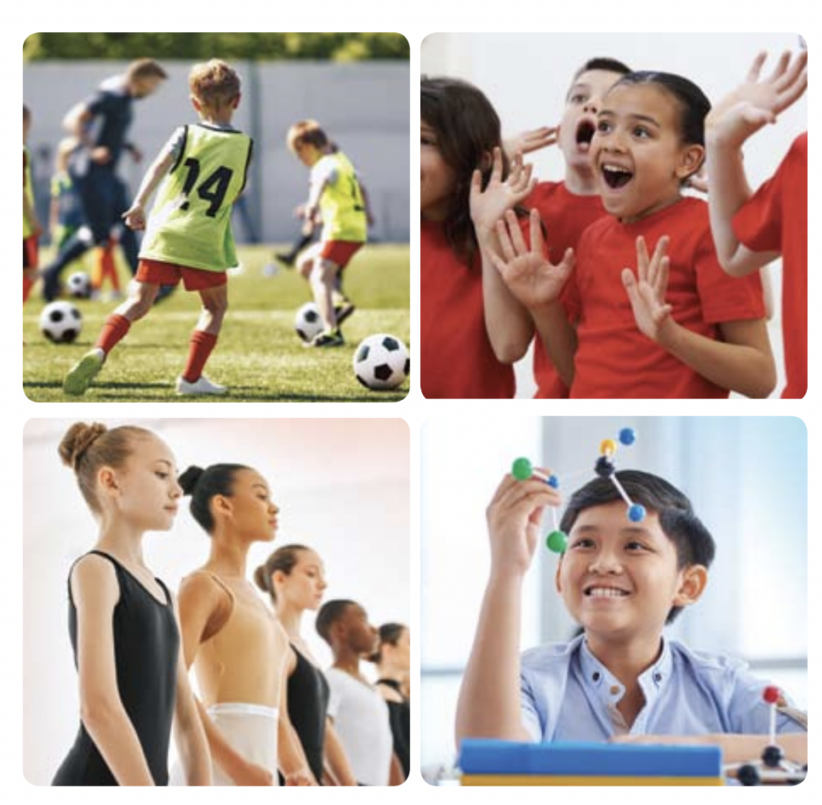A few
years ago, Jill Starishevsky, a prosecutor of child abuse and sex crimes in NYC, handled a case where a
little girl was being regularly molested by her stepfather from the time she
was 6-years-old until she was nine. After three years of being abused and keeping
it quiet (which is very common), all it took was watching an episode of Oprah for the young girl to stand up for
herself. Focused on sexual abuse in children, the show’s message was: “If
someone is hurting you, tell an adult. If you are too scared to tell your
parents, then tell a teacher.” Inspired by the episode, Starishevsky’s client
told her teacher the very next day.
It was
this heartbreaking case that prompted Starishevsky to write the children’s book
My Body Belongs to Me, and to kick-start her campaign of educating
parents on how and why to start the difficult conversation with their children
about body boundaries and the necessity of telling an adult if someone ever
hurts or touches them inappropriately.
What I love about your book is that
it’s a conversation starter for children as young as three and as old as ten.
This dialogue is very different than the one about “stranger awareness” because
one of the things I learned from you is that sexual predators are often people
that the children already know.
Parents think that they have done a service to their child by only discussing
stranger danger, and that if you’ve had this conversation with your child, then
they’re safe. But the statistics reveal a very different truth: 93% of child sexual
abuse happens at the hands of someone that is known to the child—someone in the
child’s inner circle. Stranger danger only accounts for 7% of sexual abuse.
How prevalent is sexual abuse in children?
It is more pervasive than people [think]. Child sexual abuse affects 1 in every
4 girls and 1 in every 6 boys by the age of 18 in the U.S. It could happen to
anyone’s child. There are what I call three big truths about child sexual abuse—number
one is that it does not discriminate. It doesn’t matter if you’re black, white,
rich or poor. The second big truth is that parents aren’t talking to their
children about sexual abuse. They don’t want to scare the child, or they think
that if someone was harming their child then their child would tell them or
that they would be able to tell or sense if their child was being abused. Which
leads to the third big truth, which is that children do not immediately disclose sexual abuse. The only way to combat these truths is through prevention education.
How old should a child be before you start
talking about it with him or her?
It really depends on the child, but as long as the child is old enough to
communicate with you and understand what you’re saying, and has times when they
are out of your sight, that means you should start this conversation. Typically
around age three.
Why do children often not tell anyone when
they are being abused?
One of the main reasons children, especially young children, don’t tell is
because the predator said, “This is our secret.” Children want to please this
person. And they like having this special secret.
Is there anything you would add to your important 10 Safety Tips list (see below)?
We need to listen when our children say “no.” So if Mom or Dad is having a tickling game with their child and that child says, “Stop” then we need to listen. We need to teach them that their “no” means something.
How do we help children understand that
it’s okay to say “no” to an adult?
Saying “no” to an adult is something you actually have to practice with
children because we teach our children to be respectful of adults. For example,
on my daughter’s first day of kindergarten my husband said to her, “Have a
great first day of school. Do everything your teacher says.” And I thought to
myself, “No, that’s not what we say.” What we need to say to our children is,
“Listen to everything the teacher says unless the teacher is telling you to do
something that hurts you and then you don’t have to listen to what the teacher
tells you.” We need to reinforce the message: “If someone is hurting you, you
can say ‘no’, you can run away and you should tell someone right away.”
Apparently predators often use a
grooming process with their victims. Can you talk about this?
Sexual predators often take baby steps. One of the ways this grooming process
begins is by the predator giving the child a gift. First they may touch a
child’s arm or leg for too long just to see if that child will tell. If a child
has been educated about inappropriate touching, then there is a greater
likelihood that they will not go after that child.
Are there warning signs we can look for
if we fear something has happened to our child?
The physical signs may include redness to private body parts but most often the
emotional and behavioral signs are obvious first. It is important to note that there are often no physical signs, especially in cases where there is a delay in disclosure. A big red flag is
age-inappropriate sexual behavior or knowledge. It’s so hard to tell but what I
do tell parents is that the signs are unique to each child. A child doing
really well in school suddenly does poorly. Or a child that always loves
wearing short sleeves, now only wants to wear long sleeves.
If we do sense something is going on
with our child or if our child comes to us and says they are being abused, what
should we do and say?
The first thing to do is believe your child. Even before you pick up the phone
and call the police, the child is going to be looking for your reaction. I read
somewhere that it’s more traumatic for a child to have a parent that didn’t
believe than dealing with the repercussions of the abuse itself. That means you
can’t express anger or sadness in front of your child because children think
you are angry and sad at them. Also, children often disclose incrementally, so
if a parent goes off the handle then the child is less likely to tell them the
full story. Support the child. Tell them they made the right decision in
telling you. Then you can seek professional assistance including the police,
hot lines and advocacy centers.
Heather
Ouida is the co-president of babybites, a social and educational community of
moms and moms-to-be, and a regular contributor to New York
Family.
10 Tips To Keep Children Safe From Sexual Abuse
Jill Starishevsky helps parents educate their children about the issue of
molestation on her website, mybodybelongstome.com which is full of helpful
resources like this list of preventative tips.
1. No secrets. Encourage your children to
tell you about things that happen to them that make them feel scared, sad or
uncomfortable. If someone, even a grandparent, were to say something to my
child such as, “I’ll get you an ice cream later, but it will be our
secret,” I firmly but politely say, “We don’t do secrets in our
family.” Then I say to my child, “Right? We can tell each other
everything.”
2. Don’t dress children in clothing or
accessories with their name on it. Customized clothing can help create a false sense of trust. If a
stranger says your child, “Jenny, your mom told me to bring you home so you can
have dinner,” your child may be more inclined to go along because this person
knows their name.
3. Teach your child the correct terms
for their body parts.
This will make them more at ease if they need to tell you about a touch that
made them feel uncomfortable. Inform children that the parts of their body
covered by their bathing suit are private and are for no one else to see or
touch (noting the necessary exceptions for bathing, potty issues and medical
exams in the presence of mom or dad).
4. Practice “what if” scenarios. Say to your child, “What would you
do if someone offered you a treat or a gift when I wasn’t there?” Help
your child arrive at the right answer, which is to say “no” and ask you first.
Many parents also encourage children to walk or run away in this situation.
5. Teach your child their name, address
and phone number at an early age. If a child has their parent’s cell phone number, the child can be
reunited with the parent more expeditiously.
6. Prepare a child with what to do if
they get lost. Teach
your child to find a safe person if they become lost. A safe person is a police
officer, someone in the store with a store uniform or name tag, or a mother
with children. Children should also learn to stay in the general area where
they last saw you so you can find them when you retrace your steps.
7. Internet safety. Install a safety browser on your
computer so that you can make the decisions about which websites are
appropriate for your children to view. Teach your child never to give out their
last name, address or phone number to a person on the Internet and never to
meet Internet friends in person without a parent’s supervision and consent.
Teach children not to post pictures with identifying information such as a
school uniform. Ideally, children should not post pictures on the Internet at
all. Always keep your computer in a public area of your house, not in a child’s
bedroom.
8. Let children decide for themselves
how they want to express affection. Children should not be forced to hug or kiss if they are
uncomfortable. Even with your favorite aunt, uncle or cousin, your child should
not be forced to be demonstrative in their affection. While this may displease
you, by doing this, you will empower your child to say “no” to inappropriate
touching.
9. Teach your child that adults do not
need to ask children for help. Predators use tricks to lure children, for example, asking them to
help find a lost pet, give directions or help carry something. When you are
sitting down talking to your child, use these examples as part of your “what
if” scenarios to reinforce the lessons about safety.
10. Teach children the buddy system. Children should learn it is safer to be with a
friend or trusted adult than to be alone. Encourage children to trust their
feelings if something doesn’t feel right, they should get away and tell you
about it immediately.





















